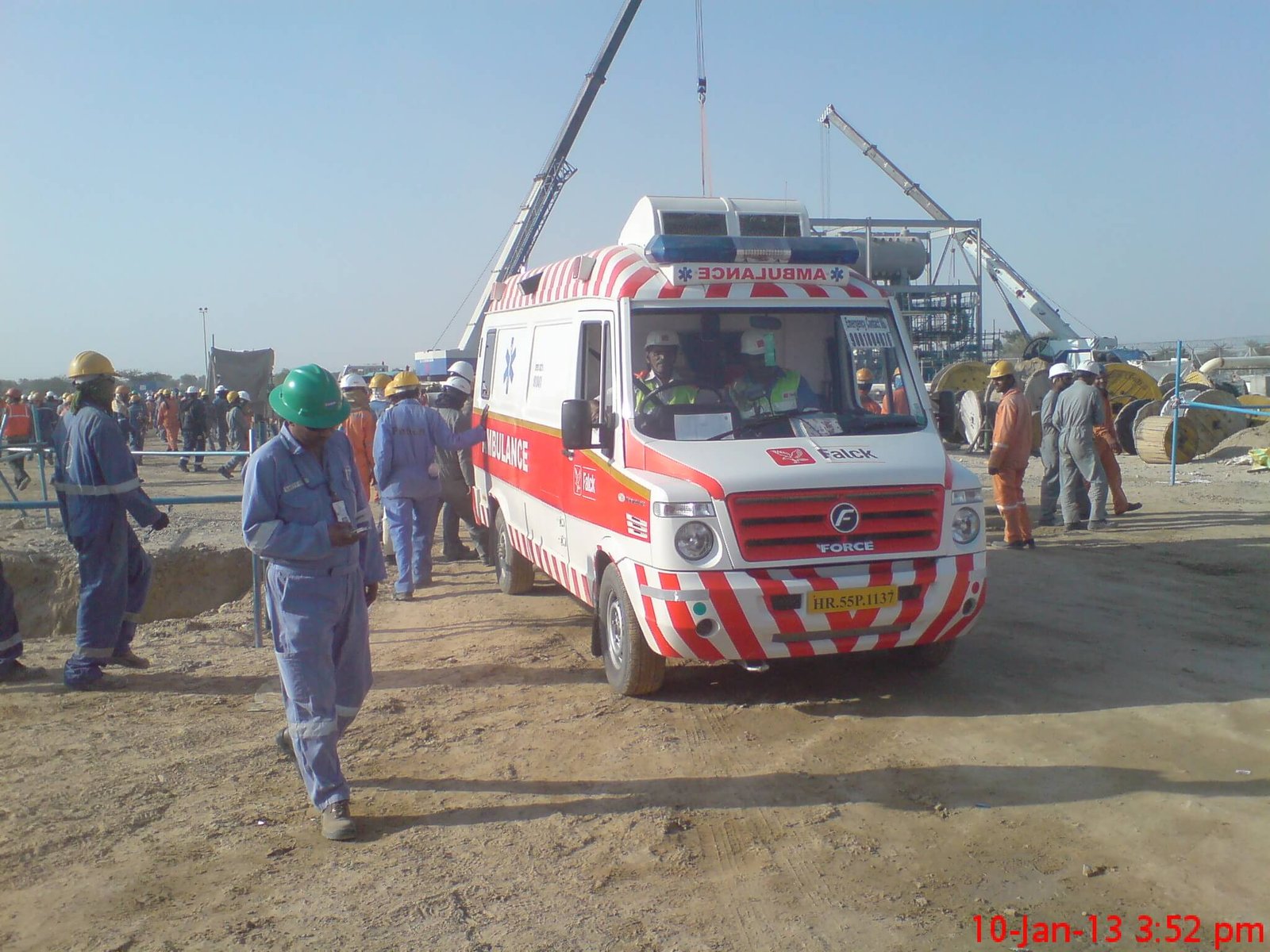Click below link for download full version
4_Chemical_Accidents_Emergency_Planning_Preparedness_And_Response_Rules_1996
1. Short Title and Commencement-(1) These rules may be called the Chemical Accidents (Emergency Planning, Preparedness, and Response) Rules, 1996.
(2) They shall come into force on the date of their publication in the Official Gazette.
2. Definitions .- In these rules unless the context otherwise requires,-
- “chemical accident” means an accident involving a fortuitous, or Sudden or unintended occurrence while handling any hazardous chemicals resulting in continuous, intermittent or repeated exposure to death, or injury to, any person or damage to any property but does not include an accident by reason only of war or radio-activity;
(b) “hazardous chemical” means,-
- any chemical which satisfies any of the criteria laid down in Part I of Schedule 1 or is listed in Part 2 of the said schedule;
(ii) any chemical listed in Column 2 of Schedule 2;
(iii) any chemical listed in Column 2 of Schedule 3;
(c) “industrial activity” includes an operation or process,-
- carried out in an industrial installation referred to in Schedule -4 involving or likely to involve one or more hazardous chemicals;
- on-site storage or on-site transport which is associated with that operation or process as the case may be;
(iii) isolated storage;
(iv) pipeline;
- “industrial pocket” means any industrial zone ear-marked by the Industrial Development Corporation of the State Government or by the State Government;
- “isolated storage” means,- storage of a hazardous chemical other than storage associated with an installation on the same site specified in Schedule 4 where that storage involves at least the quantities of that chemical set out in Schedule-2;
- “major chemical accident” means, – an occurrence including any particular major emission, fire or explosion involving one or more hazardous chemicals and resulting from uncontrolled developments in the course of industrial activity or transportation or due to natural events leading to serious effects both immediate or delayed, inside or outside the installation likely to cause substantial loss of life and property including adverse effects on the environment;
- “Major Accident Hazards (MAH) Installations”.- means, isolated storage and industrial activity at a site, handling (including transport through carrier or pipeline) of hazardous chemicals equal to or, in excess of the threshold quantities specified in column 3 of Schedule 2 and 3 respectively;
- “Manufacture, Storage and Import of Hazardous Chemical, Rules” means, – the Manufacture, Storage and Import of Hazardous Chemicals Rules, 1989, published in the notification of Government of India in the Ministry of Environment & Forests No. S.0.966 (E), dated 27 1h November, 1989;
- “off-site emergency plan” means,- the off-site emergency plan prepared under rule 14 of the Manufacture, Storage and Import of Hazardous Chemicals Rules;
- “pipeline” means,- a pipe (together with any apparatus and works associated therewith) or system of pipes (together with any apparatus and works associated therewith) for the conveyance of a hazardous chemical other than a flammable gas as set out in column 2 of Part 11 of Schedule 1, at a pressure of less than 8 bars absolute;
- “site” means,- any location where hazardous chemicals are manufactured or processed, stored, handled, used, disposed of and includes the whole of an area under the control of an occupier and includes pier, jetty or similar structure whether floating or not;
- “transport” means.- movement of hazardous chemicals by any means over land, water or air.
3. Constitution of Central Crisis Group.- (1) The Central Government shall constitute a Central Crisis Group for management of chemical accidents and set up a Crisis Alert System in accordance with the provisions of Rule-4 within thirty days from the date of the commencement of these rules.
(2) The composition of the Central Crisis Group shall be as specified in Schedule 5.
(3) The Central Crisis Group shall meet at least once in six months and follow such procedure for transaction of business as it deems fit.
(4) Notwithstanding anything contained in sub-rule (2), the Central Crisis Group may co opt any person whose assistance or advice is considered useful in performing any of its functions to participate in the deliberations of any of its meetings.
4. Constitution of Crisis Alert System:- The Central Government shall,-
(a) set up a functional control room at such place as it deems fit;
- set up an information net working system with the State and district control rooms;
(c) appoint adequate staff and experts to man the functional control room;
(d) publish a list of Major Accident Hazard installations;
(e) publish a list of major chemical accidents in chronological order;
(f) publish a list of members of the Central, State and District Crisis Groups;
- take measures to create awareness amongst the public with a view to preventing chemical accidents.
5. Functions of the Central Crisis Group: (1) The Central Crisis Group shall be tile apex body to deal with major chemical accidents and to provide expert guidance for handling major chemical accidents.
(2) Without prejudice to the functions specified under sub-rule (1), the Central Crisis Group shall,-
- continuously monitor the post accident situation arising out of a major chemical accident and suggest measures for prevention and to check recurrence of such accidents;
(d) review the progress reports submitted by the State Crisis Groups;
- conduct post-accident analysis of such major chemical accidents and evaluate responses;
- review district off-site emergency plans with a view to examine its adequacy in accordance with the Manufacture, Storage and Import of Hazardous Chemicals, Rules, and suggest measures to reduce risks in the Industrial pockets;
- respond to queries addressed to it by the State Crisis Groups and the District Crisis Groups;
- publish a State-wise list of experts and officials who are concerne” with the handling of chemical accidents;
- render, in the event of a chemical accident in a State, all financial and infra-structural help as may be necessary.
6. Constitution of State Crisis Group.- (1) The State Government shall constitute a State Crisis Group for management of chemical accidents within thirty days from the date of the commencement of these rules.
(2) The composition of the State Crisis Group shall be as specified in Schedule 6.
(3) The State Crisis Group shall meet at least once in three months and follow such procedure for transaction of business as it deems fit.
(4) Notwithstanding anything contained in sub-rule (2), the State Crisis Group may co-opt any person whose assistance or advice is considered useful in performing any of its functions, to participate in the deliberation of any of its meetings.
7. Functions of the State Crisis Group.- (1) The State Crisis Group shall be the apex body in the State to deal with major chemical accidents and to provide expert guidance for handling major chemical accidents.
(2) Without prejudice to the functions specified under sub-rule (1), the State Crisis Group shall,-
(b) assist the State Government in managing chemical accidents at a site;
- review all district off-site emergency plans in the State with a view to examine its adequacy in accordance with the Manufacture, Storage and Import of Hazardous Chemicals, Rules and forward a report to the Central Crisis Group once in three months;
- assist the State Government in the planning, preparedness and mitigation of major chemical accidents at a site in the State;
- continuously monitor the post accident situation arising out of a major chemical accident in the State and forward a report to the Central Crisis group;
(e) review the progress report submitted by the District Crisis groups;
(f) respond to queries addressed to it by the District Crisis groups;
- publish a list of experts and officials in the State who are concerned with the management of chemical accidents.
8. Constitution of the District and Local Crisis Group.- (1) The State Government shall cause to be constituted within thirty days from the date of commencement of these rules,-
(2) The composition of the District Crisis Groups and the Local Crisis Groups shall be as specified in Schedule 7 and 8 respectively.
(3) The District Crisis Group shall me et every forty five days and send a report to the State Crisis Group;
(4) The Local Crisis Group shall meet every month and forward a copy of the proceedings to the District Crisis Group.
9. Functions of the District Crisis Group.-(1) The District Crisis Group shall be the apex body in the district to deal with major chemical accidents and to provide expert guidance for handling chemical accidents;
(2) Without prejudice to the functions specified under sub-rule (1). the District Crisis Group shall,-
(a) assist in the preparation of the district off-site emergency plan;
(c) assist the district administration in the management of chemical;
(d) continuously monitor every chemical accident;
- District Crisis Groups;
- Local Crisis Groups;
- review all the on-site emergency plans prepared by the occupier of Major Accident Hazards installation for the preparation of the district off-site emergency plan;
- ensure continuous information flow from the district to the Central and State Crisis Group regarding accident situation and mitigation efforts;
- forward a report of the chemical accident within fifteen days to the State Crisis Group;
- conduct at least one full scale mock-drill of a chemical accident at a site each year and forward a report of the strength and the weakness of the plan to the State Crisis Group.
10. Functions of the Local Crisis Group.-(1) The Local Crisis Group shall be the body in the industrial pocket to deal with chemical accidents and coordinate efforts in planning, preparedness and mitigation of a chemical accident;
(2) Without prejudice to the functions specified under sub-rule (1), the Local Crisis Group shall,
(a) prepare local emergency plan for the industrial pocket;
(c) train personnel involved in chemical accident management;
- ensure dovetailing of the local emergency plan with the district off-site emergency plan;
- educate the population likely to be affected in a chemical accident about the remedies and existing preparedness in the area;
- conduct at least one full scale mock-drill of a chemical accident at a site every six months forward a report to the District Crisis Group;
(f) respond to all public inquiries on the subject.
11. Powers of the Members of the Central, State and District Crisis Groups.-
- the Members of the Central Crisis Group, State Crisis Groups and District Crisis Groups shall be deemed to be persons empowered by the Central Government in this behalf under sub-section (1) of section 10 of the Environment (Protection) Act, 1986.
12. Aid and Assistance for the functioning of the District and Local Crisis Groups.-
(1) The Major Accident Hazard installations in the industrial pockets in the district shall aid, assist and facilitate functioning of the District Crisis Group;
(2) The Major Accident Hazard installations in the industrial pockets shall also aid, assist and facilitate the functioning of the Local Crisis Group.
13. Information to the Public.- (1) the Central Crisis Groups shall provide information on request regarding chemical accident prevention, preparedness and mitigation in the country;
(2) The State Crisis Group shall provide information on request regarding chemical accident prevention, preparedness and mitigation to the public in the State;
(3) The Local Crisis Group shall provide information regarding possible chemical accident at a site in the industrial pocket and related -information to the public on request;
(4) The Local Crisis Group shall assist the Major Accident Hazard installations in the industrial pocket in taking appropriate steps to inform persons likely to be affected by a chemical accident.
Click below link for download full version
4_Chemical_Accidents_Emergency_Planning_Preparedness_And_Response_Rules_1996





